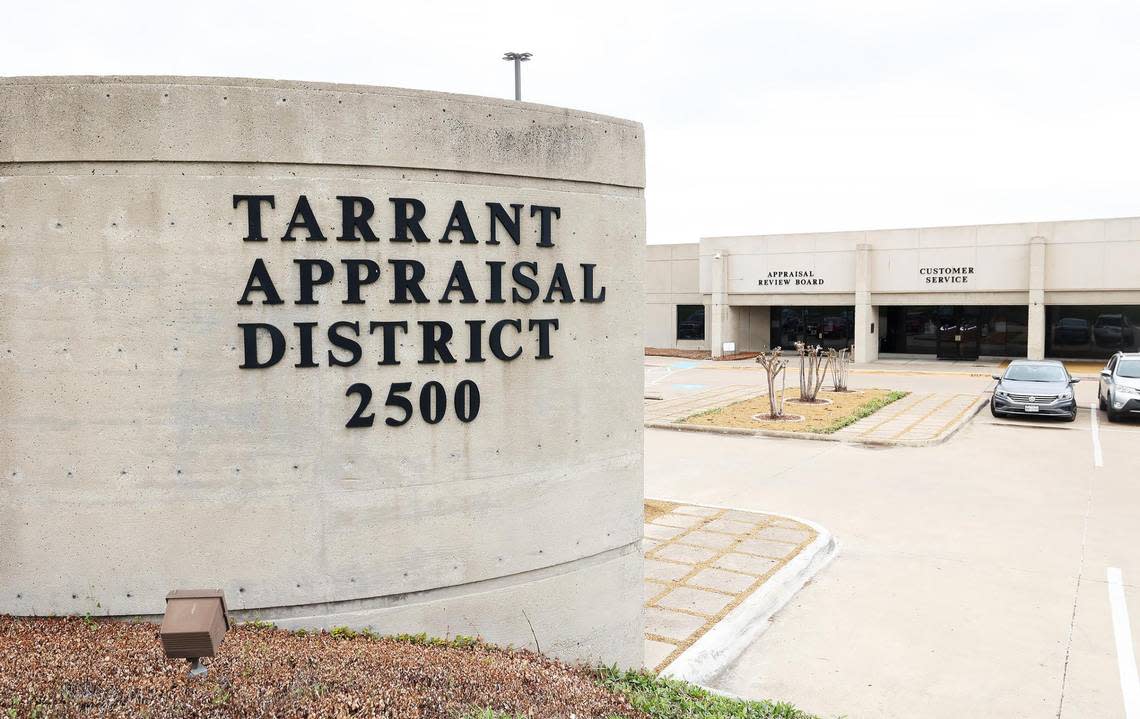TAD wants to cap appraisal increases at 5%. Would the move save Tarrant homeowners money?

In Reality Check stories, Star-Telegram journalists dig deeper into questions over facts, consequences and accountability. Read more. Story idea? RealityCheck@star-telegram.com.
The Tarrant Appraisal District is set to consider capping annual home appraisal value increases at 5% at its board meeting on Monday.
Lowering the cap from the current 10% is ostensibly designed to protect homeowners from large tax increases as home values soar. But would the move actually save homeowners in Tarrant County money?
Each year, TAD certifies the net taxable value of properties in the county. The various taxing entities, including water, emergency services and municipal utility districts, as well as cities and school districts then base their tax rates on those values.
But they will have to make up for the lower taxable values somewhere, according to Rita Jefferson, a local policy analyst at the Institute on Taxation and Economic Policy, a left-leaning think tank based in Washington, D.C., And that somewhere is higher tax rates.
“This will just straight up raise tax rates,” Jefferson said. “Municipalities and the special taxing districts, the county, all of them are just going to say, ‘We need this money. It doesn’t really matter how much your home is valued. We still need the money to run the schools, to offer sewer services, do all these different things.’”
Tarrant homeowners may see savings in the short-term, she said, “but definitely not long term.”
Jefferson pointed out extreme “worst case scenarios” that lowering caps can lead to, such as two neighbors with identical homes paying disproportionate property taxes. If a home is sold, its appraised taxable value becomes the full market value, while the unsold home next door retains its lower property taxes that have only slightly increased over the years.
This can ultimately cause home prices to go up and make homeownership more difficult for first-time buyers, she said.
“When someone is incentivized, or at times forced, to stay in their home because a new, higher property tax burden in a new home might be too high, it’s forcing a younger person or family buying their first home to compete with other buyers and bid up the price, which pushes property values up,” she said.
Lynn Krebs, a research economist at Texas A&M’s Texas Real Estate Research Center, likened this phenomenon to what is called the rate “lock-in effect,” in which homeowners stay in mortgages with lower rates when interest rates rise.
“In the same way that that creates a disincentive to move, if you have special provisions in your current location, that if you left that county and moved to another, you would lose that, then that’s an issue,” he said.
While he has not observed other Texas counties capping appraisal increases at 5%, Krebs said that doing so will likely have the effect of triggering rate hikes for “those that benefit from that exemption, but also including those that don’t,” as the limitation will apply to homeowners, but high tax rates would apply to all taxpayers within an entity.
🔎 Here's what else we've Reality Checked:
→ Is AI 'manipulating' your thermostat?
→ Are American Airlines flight attendants really going to strike?
→ True or false: Snakes can swim up your toilet
Policymakers should consider the downstream effects of these and other tax relief proposals, according to Manish Bhatt, a senior policy analyst at the right-of-center Tax Foundation.
In addition to creating disincentives for homeowners to move to bigger houses, another such effect is that new construction or land improvements could trigger a new assessment, he said.
This appears to be the case in Tarrant County. Per TAD’s Residential Appraisal Manual: “If you are adding any of the above mentioned and enter it as New Construction it will cause the value limiting exemptions to recalculate instead of limiting the value to the Homestead 10% increase or the over 65 cap.”
Such tax limitation regimes can “discourage improvements to land and structures of residential property,” he said.
Bhatt agreed that lowering the cap to 5% could cause a “tax shift” in which rates go up to compensate for lower taxable values, but said that there should also be a “parallel conversation” about an entity’s spending and whether or not it needs reforms.
“That absolutely should be something policymakers should consider,” he said, adding they should also “be transparent about the fact that there are times when tax reductions in tax relief create a tax shift.”
Lowering the cap statewide was one of two dueling proposals to lower property taxes in the state legislature last year. The other proposal to increase the homestead exemption from $40,000 to $100,000 and provide billions in tax relief won out, amounting to what James Quintero, policy director of the Taxpayer Protection Project at the conservative Texas Public Policy Foundation called “a tremendous amount of tax relief.”
Texas taxpayers can expect more relief to come thanks to these initiatives, but even these types of relief have seen policies to counteract them at the local level, he said.
There is “a lot of truth” to the idea that a lower cap will lead to higher rates, Quintero said, but added that taxable entities should also control spending rates. He recommended local government contract third-party efficiency auditors to find where spending can be reined in.
The types of spending that need controlling will vary from entity to entity, he said.
“People should want to know where there are opportunities to redirect resources from either redundant programs or inefficiencies and take those monies away from those areas and then put them towards the core functions of government,” he said.
The Star-Telegram reached out to Eric Morris, Callie Rigney and Matt Bryant, the three newly elected TAD board members who campaigned on this reform, for comment. Morris declined to comment. Rigney and Bryant did not immediately respond.

